Repost: Today's Inspiration, noreply@blogger.com (Leif Peng), http://todaysinspiration.blogspot.com/2013/06/the-artists-of-canadian-whites-sid.html
During WWII, with American comics unavailable due to a wartime embargo on "non-essential mail", homegrown Canadian comic books flourished. Guest author, Ivan Kocmarek takes a look at one of the artists who drew those comics...
Sid Arnold Barron was born in Toronto on June 13, 1917. From his obituary written by Tom Hawthorn for the Globe and Mail in 2006 (he died on April 29 in Victoria) we learn that he was an illegitimate child of a Belgian officer billeted with his mother’s family.

He was raised by his aunt and her family who moved the family quickly to Victoria, B. C. when Sid was just two. He did not learn the truth about his real mother until he was an adult. Sid also had a pronounced stammer and was treated for the speech disorder.

He took classes from Allan Edwards (who also taught Pierre Berton) in the late thirties. In his mid-twenties he began working in the fledgling Canadian comic book industry for the last major publisher, Educational Projects out of Montreal which began publishing its main comic, Canadian Heroes Comics in October of 1942.
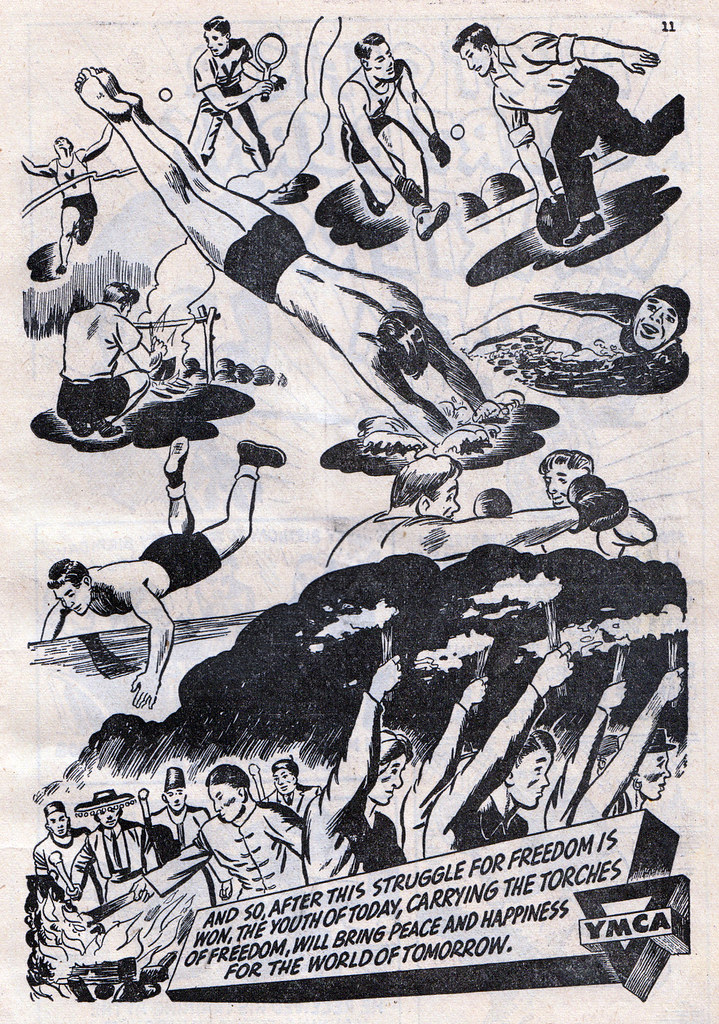
Sid drew a variety of stories for this, almost entirely, non-fictional comic.
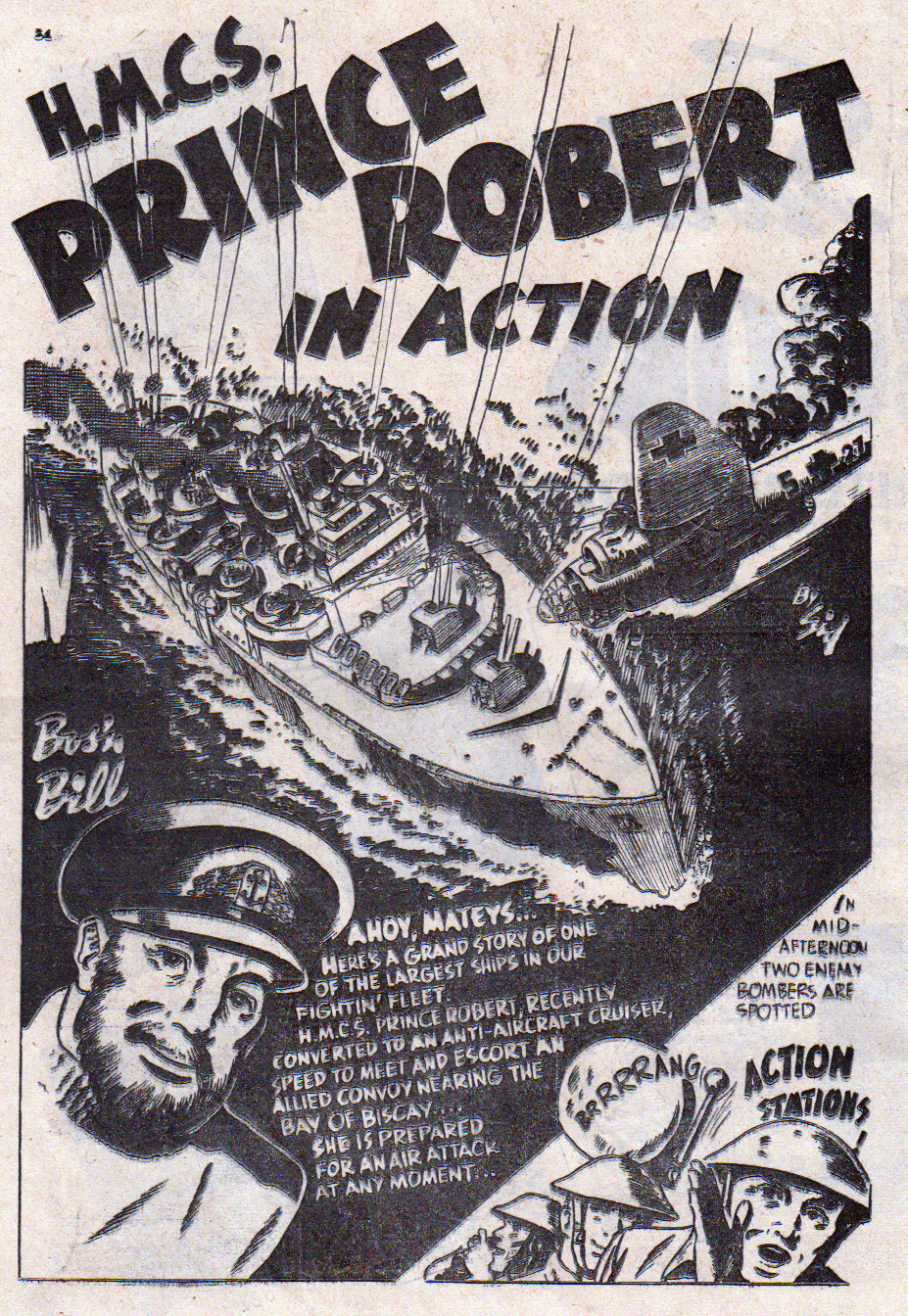
In 1958 Sid began working as a cartoonist for The Victoria Times and then in 1961 began selling cartoons to the Toronto Star. A year later he moved to Calgary to work for The Albertan while still selling material to The Star. In 1964 his work also began to appear in Maclean’s Magazine.
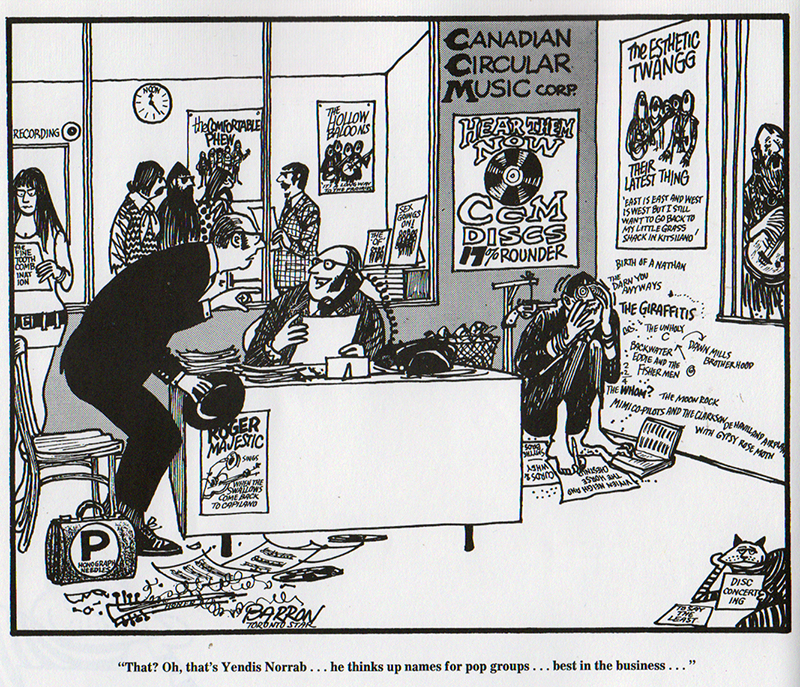
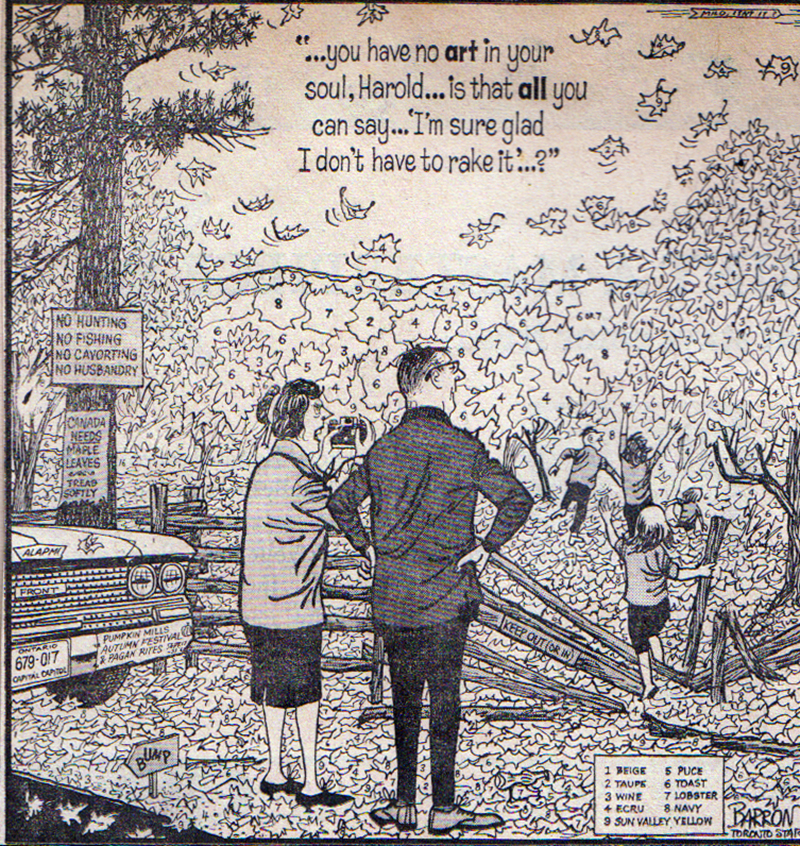
His medium was black ink and crayon on commercial board and his subject matter dealt wittily, dryly, and satirically with themes from daily life rather than the directly political. His cartoons were dense and packed with nuances and detail. Robert Fulford called him “…the poet of the mundane….”
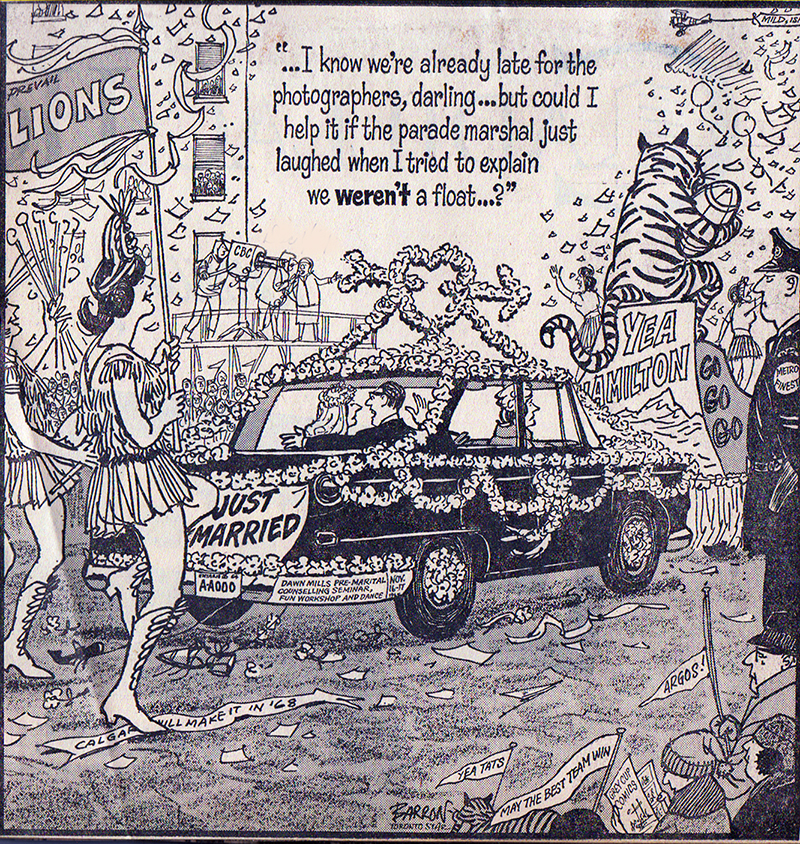
His cartoons almost always contained his trademark, striped “puddy tat” somewhere in the lower vestiges of the piece, holding up a sign with a snide comment...
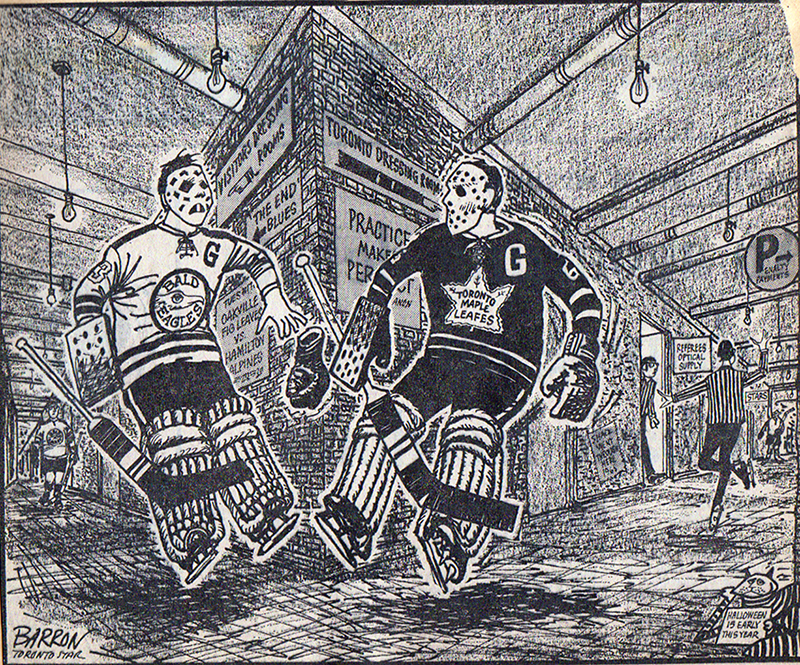
... and often a old biplane sailing through the background trailing a “Mild, isn’t it?” banner.
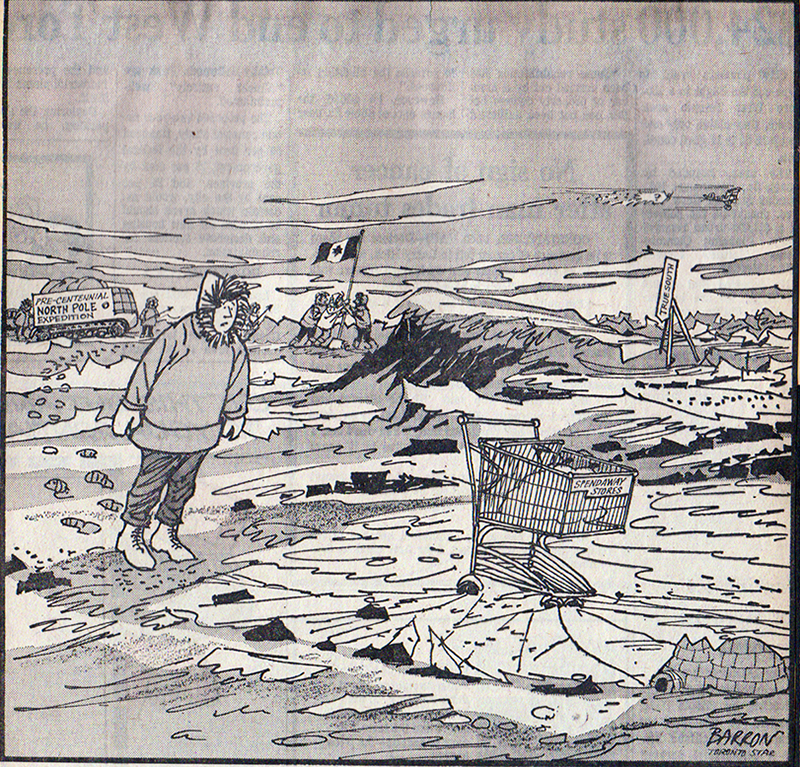
Sid Barron quit cartooning in 1989 and moved to Coombs on Vancouver Island with his wife Jesi, herself an artist, to concentrate on painting water colours with a nautical theme carrying on his life-long passion for boats.
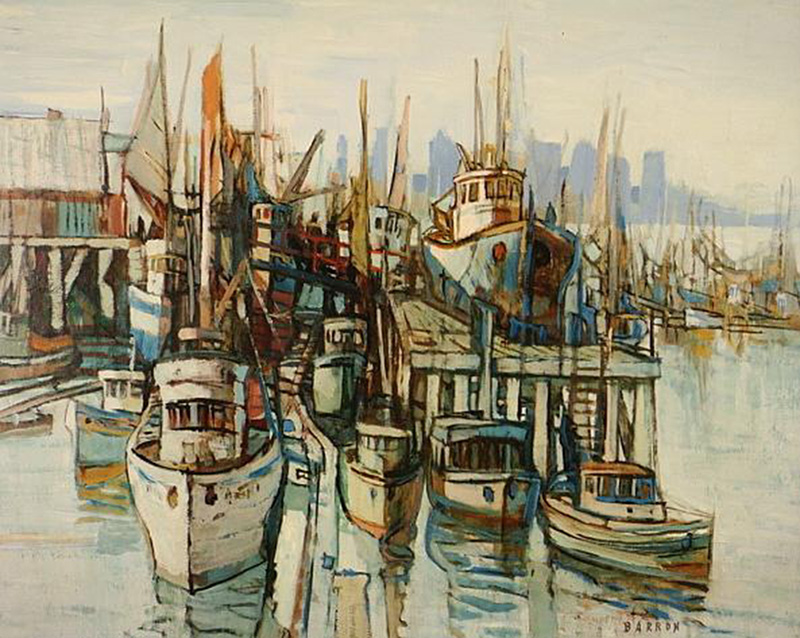

Canada remembers Sid Barron as a war-time comic book artist,

... an editorial cartoonist,
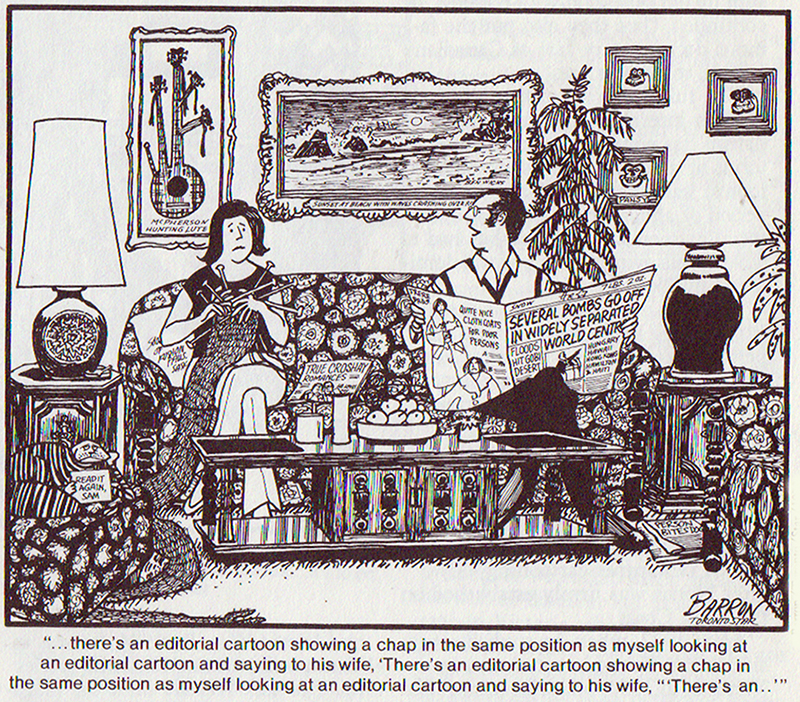
... and a fine arts painter.
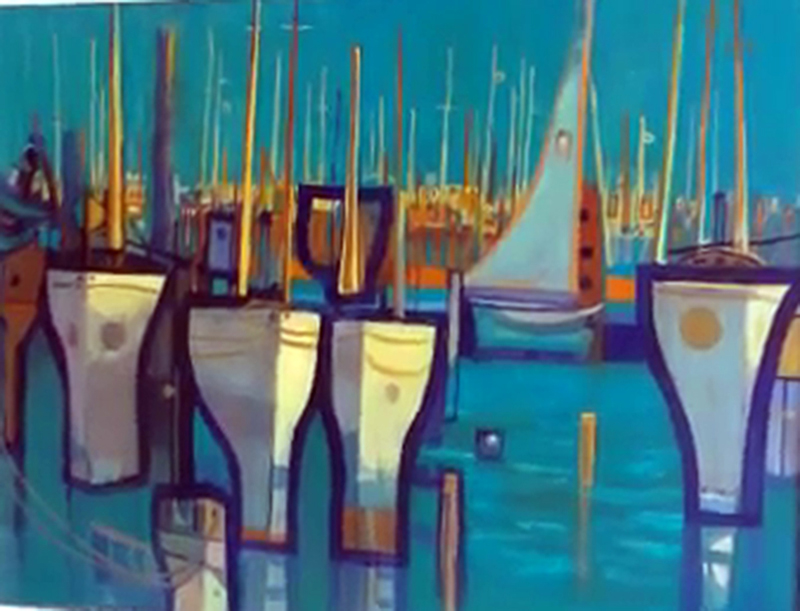
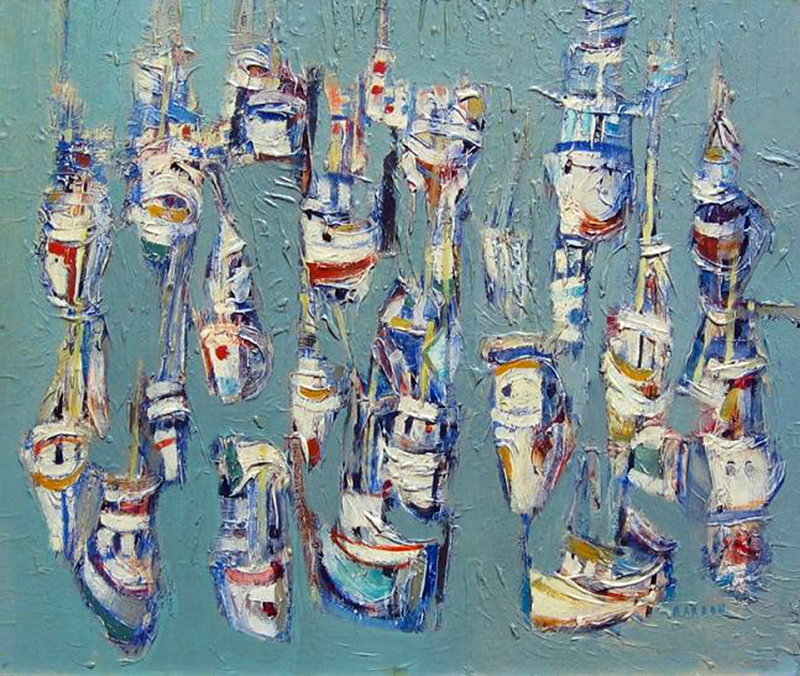
This last graphic is a mixed media piece of Sid Barron by Nova Scotia artist Ken Flett entitled “Sprung from the Loins of Aunt Daisy.”
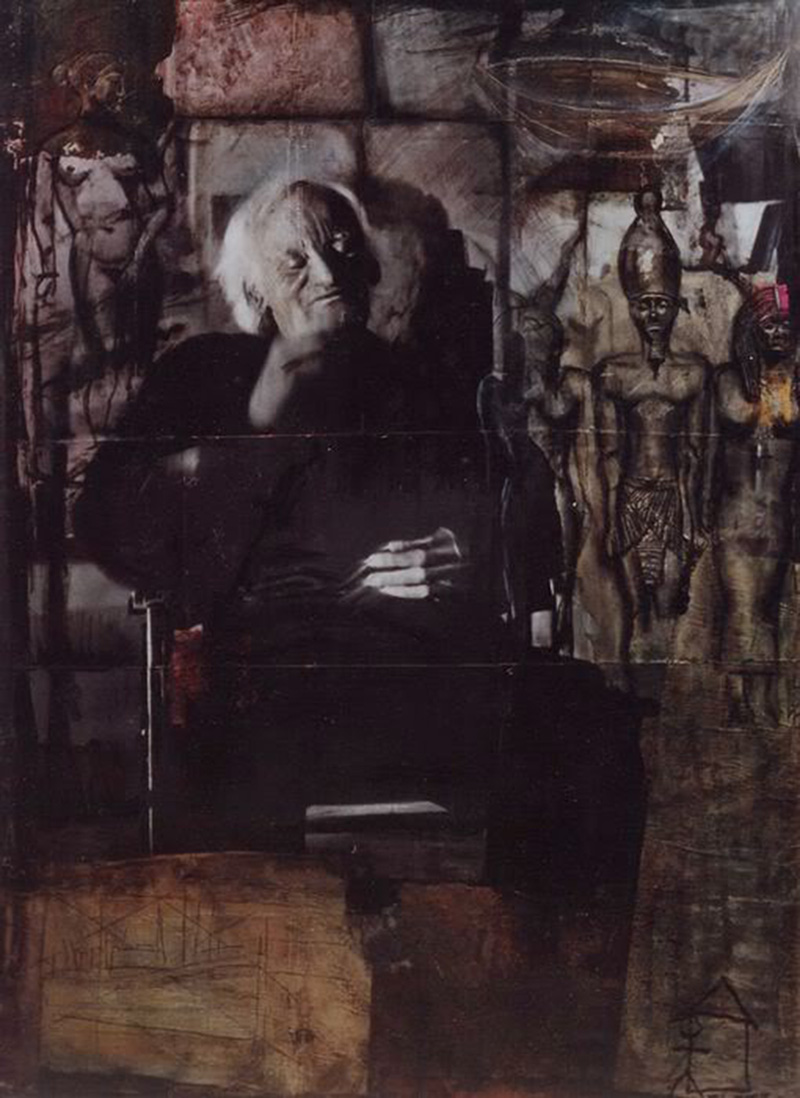
* Ivan Kocmarek will be participating in A Canadian Comics Panel discussion being held at the Niagara Falls Comic Con this Saturday, June 8, 2013 from 12:00 noon until 1:00 PM in room 205 at the Niagara Falls Scotiabank Convention Centre. Topics will include “The History of Canadian Comics” and “What Makes a Comic "Canadian?” as well as "Where Canadian Comics are Today." The panel will also feature Hope Nicholson – Associate Producer of the upcoming Canadian Comics documentary Lost Heroes, Richard Comely – creator of Captain Canuck, and Kevin Boyd – Joe Shuster Award committee member and owner of Toronto’s Comic Book Lounge. This is a knowledgeable and lively group and they look forward to seeing you at the panel!

During WWII, with American comics unavailable due to a wartime embargo on "non-essential mail", homegrown Canadian comic books flourished. Guest author, Ivan Kocmarek takes a look at one of the artists who drew those comics...
Sid Arnold Barron was born in Toronto on June 13, 1917. From his obituary written by Tom Hawthorn for the Globe and Mail in 2006 (he died on April 29 in Victoria) we learn that he was an illegitimate child of a Belgian officer billeted with his mother’s family.

He was raised by his aunt and her family who moved the family quickly to Victoria, B. C. when Sid was just two. He did not learn the truth about his real mother until he was an adult. Sid also had a pronounced stammer and was treated for the speech disorder.

He took classes from Allan Edwards (who also taught Pierre Berton) in the late thirties. In his mid-twenties he began working in the fledgling Canadian comic book industry for the last major publisher, Educational Projects out of Montreal which began publishing its main comic, Canadian Heroes Comics in October of 1942.

Sid drew a variety of stories for this, almost entirely, non-fictional comic.

In 1958 Sid began working as a cartoonist for The Victoria Times and then in 1961 began selling cartoons to the Toronto Star. A year later he moved to Calgary to work for The Albertan while still selling material to The Star. In 1964 his work also began to appear in Maclean’s Magazine.


His medium was black ink and crayon on commercial board and his subject matter dealt wittily, dryly, and satirically with themes from daily life rather than the directly political. His cartoons were dense and packed with nuances and detail. Robert Fulford called him “…the poet of the mundane….”

His cartoons almost always contained his trademark, striped “puddy tat” somewhere in the lower vestiges of the piece, holding up a sign with a snide comment...

... and often a old biplane sailing through the background trailing a “Mild, isn’t it?” banner.

Sid Barron quit cartooning in 1989 and moved to Coombs on Vancouver Island with his wife Jesi, herself an artist, to concentrate on painting water colours with a nautical theme carrying on his life-long passion for boats.


Canada remembers Sid Barron as a war-time comic book artist,

... an editorial cartoonist,

... and a fine arts painter.


This last graphic is a mixed media piece of Sid Barron by Nova Scotia artist Ken Flett entitled “Sprung from the Loins of Aunt Daisy.”

* Ivan Kocmarek will be participating in A Canadian Comics Panel discussion being held at the Niagara Falls Comic Con this Saturday, June 8, 2013 from 12:00 noon until 1:00 PM in room 205 at the Niagara Falls Scotiabank Convention Centre. Topics will include “The History of Canadian Comics” and “What Makes a Comic "Canadian?” as well as "Where Canadian Comics are Today." The panel will also feature Hope Nicholson – Associate Producer of the upcoming Canadian Comics documentary Lost Heroes, Richard Comely – creator of Captain Canuck, and Kevin Boyd – Joe Shuster Award committee member and owner of Toronto’s Comic Book Lounge. This is a knowledgeable and lively group and they look forward to seeing you at the panel!

No comments:
Post a Comment